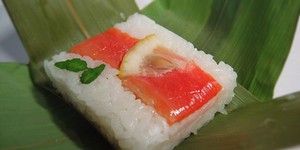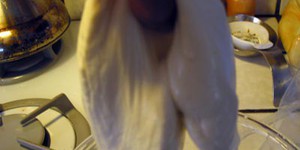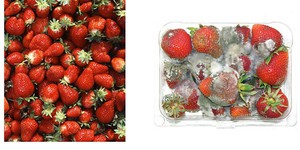Others Like “Steamy Standing Time: How Food Size Impacts Carryover Cooking” (top 20 results)
|
Yogurt is a very versatile dairy product. It's yummy eaten straight from the container, it is good for your digestive system, and it can be used in several ways for cooking. There is historical evidence that yogurt-making developed 4,500 years ago! Humans depended on yogurt-making as a way to preserve milk. Yogurt is the result of bacterial fermentation of milk. In fermentation, the bacteria consume the milk sugar, lactose, and produce lactic acid. The end-product is a thick, creamy, and tangy…
Read more
Did you know that people eat with their eyes as well as with their mouths? Food presentation—also called plating techniques or garnishing—makes food appear more appetizing. Checking out how the food looks is the cook's last task and the diner's first. Food that is well-presented is beautiful, colorful, and captivating. Not only does it make the diner really want to eat, but good presentation also allows the diner to identify the food ingredients, their quality, and the technique…
Read more
Have you ever bitten into a slice of bread only to find that it no longer seems fresh? Instead, it has the firm, undesirable texture that comes about when the bread is going stale. Chemically, what happens during the staling process? Can it be reversed (at least temporarily)? Do some background research to answer these questions and then apply those answers to one (or more) of the following experiments to find the optimal state to keep your bread fresh.
Experiment 1: What Temperature Keeps…
Read more
If you browse through a candy cookbook, you might notice that many of the recipes call for corn syrup in addition to sugar. Both sugar and corn syrup are sweet, so why do you need corn syrup if you already have sugar? In candy making, corn syrup is known as an interfering agent. But what does this mean and how does it work? You can find out for yourself by making two batches of rock candy, one with corn syrup and one without. For example, you could alter the science project When Science is…
Read more
What is cooking? Cooking is applying heat to food in order to help make it taste good. But the decision to cook your food doesn't end there. Do you want to cook it at a low temperature for a long time or do you want to apply high heat and cook or sear it right away? You might think that a pot is just something in which to cook your food, but it is also a cooking tool. Pots and pans are made from different kinds of materials, such as aluminum, stainless steel, iron, and ceramics. Each of these…
Read more
If you've ever been on a long hike, you probably already know how hungry all that walking can make you. But if you're going a long distance, the last thing you want is a heavy pack of snacks on your back. So what can you bring along for a healthy, hunger-satisfying, lightweight snack? How about dried foods, like banana chips or beef jerky? Many foods have high water content. The drying process removes much of the water from the food, leaving behind a lighter, but equally nutritious snack. Just…
Read more
How does temperature change as barometric pressure changes? You can make a device to test this using a barometer and a thermometer on your stovetop. You can collect your own weather data from a barometer and thermometer over a period of a week or month. You can also use data from a weather station to plot the relationship between barometric pressure and temperature. Does the pressure change as humidity changes? Measure the pressure in a humid and non-humid environment (like your bathroom…
Read more
How do you like your steak? The internal temperatures for beefsteaks at various levels of "doneness" are as follows: medium-rare, 145°F; medium, 155°F; medium-well, 165°F; and well-done, 170°F. What factors determine how long you have to cook a steak to reach the desired temperature? The temperature of the steak before you start to cook it will clearly be important. The temperature the steak is cooked at will also be a factor. And of course, the thickness of the steak will…
Read more
Oooey gooey cheese...yum! Who doesn't like a slice of warm pizza straight from the oven? There's nothing quite like a slice of pizza and a glass of milk, so what makes pizza so great? The cheese! But did you know that making cheese is all about science and chemistry? In this science fair project, you will learn more about the science of cheese making and what kind of milk works best. Try this science fair project and you'll learn about science and get something yummy to eat afterward!
Read more
Fresh strawberries and summer just go together. Walking through the local farmers' market on a warm day, the bright, red strawberries call out to you, beckoning you to buy them and take them home. The next day, as you get ready to savor the delicious berries, you notice that yesterday's juicy, red strawberries are now covered in...eewwww, mold! In this cooking and food science fair project, you will investigate thermotherapy and whether this technique can preserve strawberries and prevent mold…
Read more
|
Explore Our Science Videos
DIY Mini Drone Part 1: Build Your Drone
How to Build a Unicorn Art Bot
Colorful Melting Ice Ball Patterns - STEM Activity








